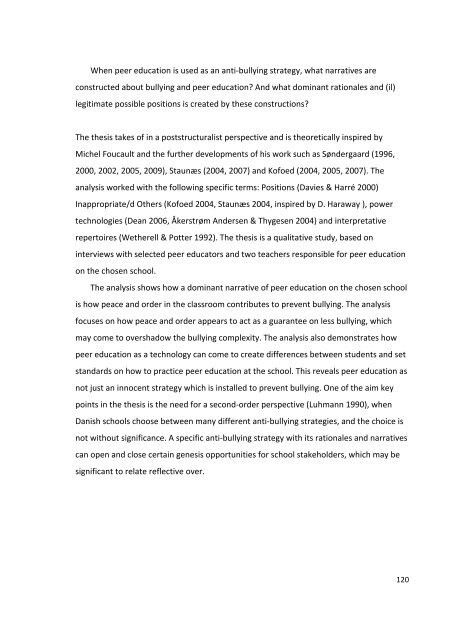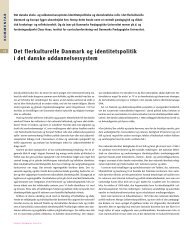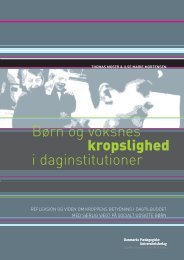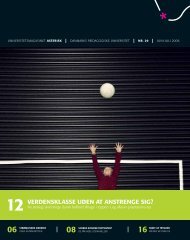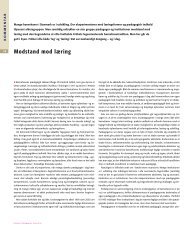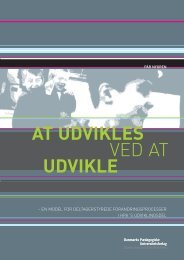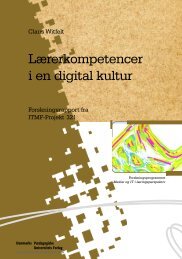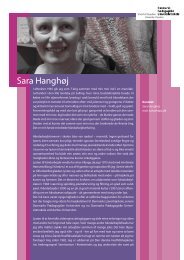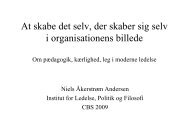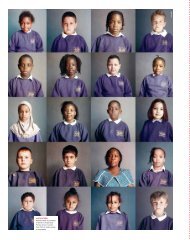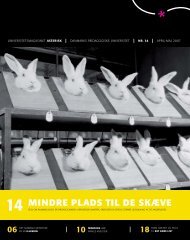Mia Lund Kongsbak - Peer education Et redskab til - Institut for ...
Mia Lund Kongsbak - Peer education Et redskab til - Institut for ...
Mia Lund Kongsbak - Peer education Et redskab til - Institut for ...
You also want an ePaper? Increase the reach of your titles
YUMPU automatically turns print PDFs into web optimized ePapers that Google loves.
When peer <strong>education</strong> is used as an anti‐bullying strategy, what narratives are<br />
constructed about bullying and peer <strong>education</strong>? And what dominant rationales and (il)<br />
legitimate possible positions is created by these constructions?<br />
The thesis takes of in a poststructuralist perspective and is theoretically inspired by<br />
Michel Foucault and the further developments of his work such as Søndergaard (1996,<br />
2000, 2002, 2005, 2009), Staunæs (2004, 2007) and Kofoed (2004, 2005, 2007). The<br />
analysis worked with the following specific terms: Positions (Davies & Harré 2000)<br />
Inappropriate/d Others (Kofoed 2004, Staunæs 2004, inspired by D. Haraway ), power<br />
technologies (Dean 2006, Åkerstrøm Andersen & Thygesen 2004) and interpretative<br />
repertoires (Wetherell & Potter 1992). The thesis is a qualitative study, based on<br />
interviews with selected peer educators and two teachers responsible <strong>for</strong> peer <strong>education</strong><br />
on the chosen school.<br />
The analysis shows how a dominant narrative of peer <strong>education</strong> on the chosen school<br />
is how peace and order in the classroom contributes to prevent bullying. The analysis<br />
focuses on how peace and order appears to act as a guarantee on less bullying, which<br />
may come to overshadow the bullying complexity. The analysis also demonstrates how<br />
peer <strong>education</strong> as a technology can come to create differences between students and set<br />
standards on how to practice peer <strong>education</strong> at the school. This reveals peer <strong>education</strong> as<br />
not just an innocent strategy which is installed to prevent bullying. One of the aim key<br />
points in the thesis is the need <strong>for</strong> a second‐order perspective (Luhmann 1990), when<br />
Danish schools choose between many different anti‐bullying strategies, and the choice is<br />
not without significance. A specific anti‐bullying strategy with its rationales and narratives<br />
can open and close certain genesis opportunities <strong>for</strong> school stakeholders, which may be<br />
significant to relate reflective over.<br />
120


